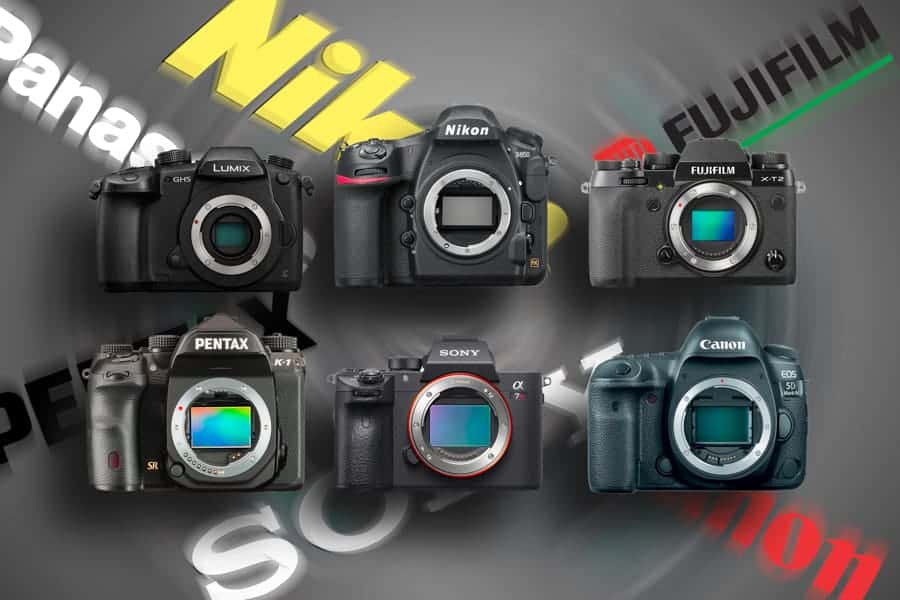 There has never been a better time to be a Photographer. It doesn’t matter if you’re a Pro, Pro/Enthusiast, Amature or just starting out, it is a very good time to be involved in the Photography world. From the top brands right on down to the lesser known and even Chinese knockoff products, there is so much out there for us to work with.
There has never been a better time to be a Photographer. It doesn’t matter if you’re a Pro, Pro/Enthusiast, Amature or just starting out, it is a very good time to be involved in the Photography world. From the top brands right on down to the lesser known and even Chinese knockoff products, there is so much out there for us to work with.
Sigma and Tamron now make Lenses that rival and, in some cases, surpass the optical quality of the big brands like Nikon and Canon.
But it all starts with the camera and boy do we have some fantastic camera bodies available to us today! Even the entry level consumer cameras are so advanced witch specs and features that just 6-7 years ago would have them placed right with the very best PRO bodies at the time.
This article will deal with 6 TOP GRADE professional level cameras that fall under the $5,000 (USD) limit. There are many professional cameras that cost a whole lot more than $5,000 but we wanted to make this list for the Pro/Advanced Enthusiast that may be looking for an upgrade to their current model.
There are cameras from Nikon (D5) and Canon (1Dx M ii) along with Hasselblad and Phase One, among others, that blow far past the $5,000 threshold so those were not included since they are specialty cameras for the pro who knows exactly what they need.
Important Factors
Before the list begins, I will point out some of the factors that led me to come up with these 6 bodies. To list ONLY Six was a really tough thing to do since there are so many worthy contenders.
A well rounded camera that can be used for landscapes, sports, low light, video and any other shooting condition is what I was after in this article. Lens selection as well as other third party accessories also plays into determining what is the best choice.
Sensor Size
Up until just a few short years ago, a crop sensor body meant suffering in low light conditions and having poor lens selection to choose from. While there still are many more choices in the lens lineups for full frame bodies, there are some systems that make ONLY crop sensor specific lenses and they are of top quality.
This list is in random order and in no way suggest that the list is in order of best to last or last to best. I will include my pick and why at the conclusion of this article. So here we go!
1 ) SONY A7RIII
The Sony A7RIII is Sony’s most recent high end, high resolution camera. It is a Full Frame mirrorless camera with stunning features and equally incredible performance. Taking the same sensor from the previous A7RII, this body is built around a 42 megapixel back side illuminated (BSI) sensor. The truly amazing part about this body is that it can shoot a whopping 10 fps at that high resolution mark. Not a small feat to accomplish.
The native ISO range is 100-32,000 with and extended range of 50-102,400.
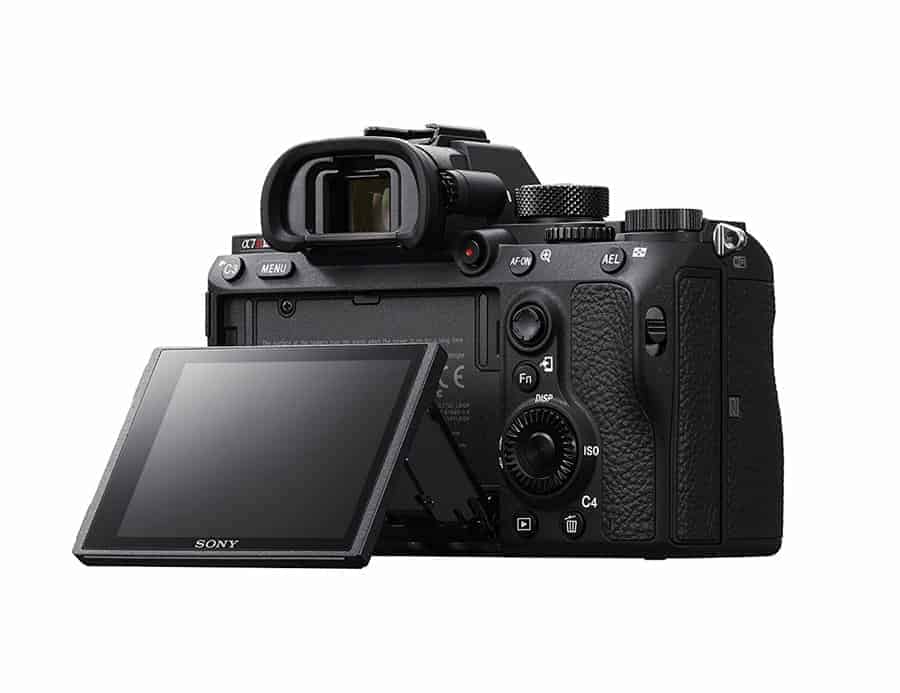
They have created this unit with faster processing along with a better AF system and a huge plus; a bigger and better battery that was made to handle all of these features and demands of a mirrorless camera. There is 5 axis in body image stabilization that is rated at a full 5.5 stops.
This camera incorporates a tilting LCD display with touch control. A nice feature is that the view finder is disabled when the screen is tilted out. This will assure the sensor isn’t triggered and it won’t cause the screen to go dark.
The addition of an AF Joystick to help quickly choose an AF point is a sure plus and will make many Sony users very happy.
VIDEO
On the video side, the camera captures 4K Footage from the Super 35 cropped region oversampled from 5k capture. It can shoot 4k at 30fps and 1080p at 120fps. It can capture 8 bit 4:2:0 footage internally or can output 8 bit 4:2:2.
The body has two SD Slots – One is UHS-1 and the other UHS-2.
The A7RIII has certainly incorporated many of the technologies Sony has learned from creating their super high speed A9 body. With the large sensor, low noise and super dynamic range performace, the A7RIII is a camera that can create great landscapes, capture action, portraits and just about anything else you can throw at it.
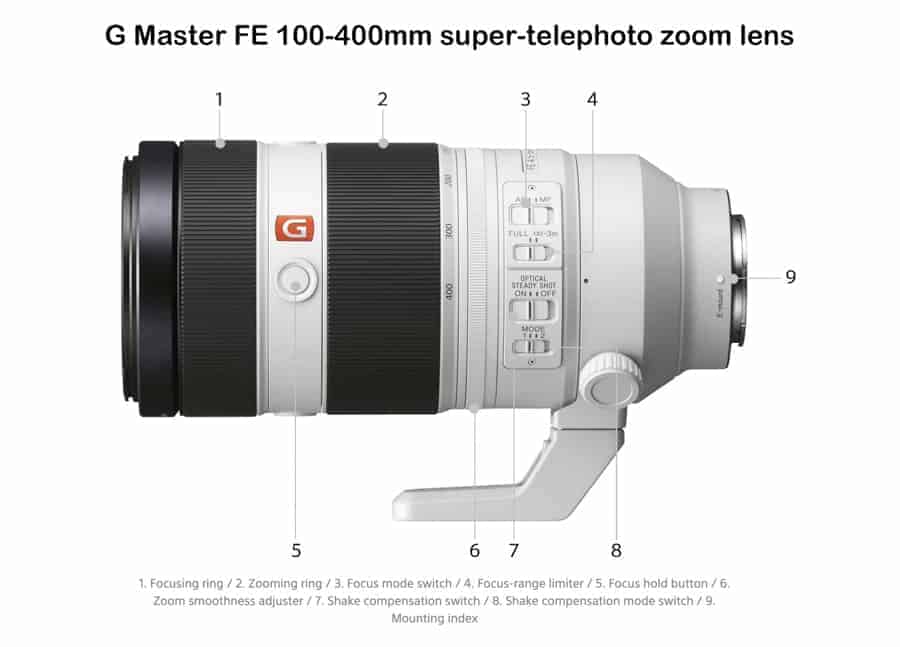
With Sony’s list of great “G” glass expanding constantly, Sony is poised to be at or near the top of the Professional Photography world for years to come. Many users have switched to Sony from manufacturers such as Canon and lots have used, with great success, the adapters from Metabones that allow use of their glass on the Sony body. Below are some key specs on this body:
- 42.4 MP back-illuminated Exmor R CMOS sensor with gapless on-chip lens design
- New front-end LSI and updated BIONZ X processing-engine for maximum processing speed
- Advanced Hybrid AF system with 399 focal-plan phase-detection AF points cover 68% of the image Plane and 425 contrast AF points covering 47% of the image area
- 10 fps with continuous and accurate AF/AE in either mechanical or silent shudder mode
- Dual SD media card Slots
At the time of this writing, the Sony A7RIII sells for $3,198.00 on Amazon.com.
The Sony A7RIII is available HERE!
2 ) Nikon D850
The Nikon D850 is the latest camera body from Nikon and it sports a whopping 45.7 BSI Imaging sensor. The camera, like the Sony above, is capable of high frame rate capture. It can capture 7fps or 9fps but to get the faster capture speed requires the use of the optional battery grip and Nikon D5 battery. The battery and the charger plus the grip will set you back several hundreds of dollars but you will gain 2 full fps which can mean everything with high speed action.
The Native ISO Range is 64-25,000 and expandable to 32-120,400.

The same AF system on the flagship Nikon D5 is shared on the D850. This equates to 153 points, of which 99 are cross-type, and Nikon’s very effective 3D Tracking.
The Nikon D850 sports a dust and weather sealed body along with the great addition of illuminated buttons for those situations where lighting is not available. The LCD is a 3.2inch tilting display with touch controls. The view finder is touted as “Nikon’s Brightest” to date.
There is one XQD slot and 1 UHS II-compliant SD slot available.
In video mode the camera is capable of UHD 4K video capture at up to 30p from full sensor width.
It also captures 1080p at up to 120fps. You get 4:2:2 8-bit UHD uncompressed output while outputting to a card.
Nikon has had its fair share of financial woes as of late and it’s great to see them hit the market with such a full featured, rugged body that is very good at all that is was designed to do. Nikon has been using Sony sensors for quite some time now and for good reason; Sony has been dominating the worldwide image sensor market.
However, Nikon must have been paying attention as this new BSI 45.7 mp CMOS sensor is made in house by Nikon. The low noise performance and dynamic range are outstanding. The popular D810 was very good and Nikon has squeezed in a little more resolution and quality with this sensor. When you realize how great the D810 sensor was and still is, this is very exciting.
Taking a page from their popular D750, this Pro Level body now sports a tilting display. It is 2017 and any camera made today should have a tilting LCD screen as it allows for much more exacting compositions and also will keep you from getting on the ground in many situations.
With the addition of the legendary Nikon family of lenses, Nikon has hit a homerun with the D850.
There are two articles here on the ImprovePhotography Website all about the Nikon D850 for Landscapes and one for Concerts. Click HERE for the landscape review and HERE for the concert review!
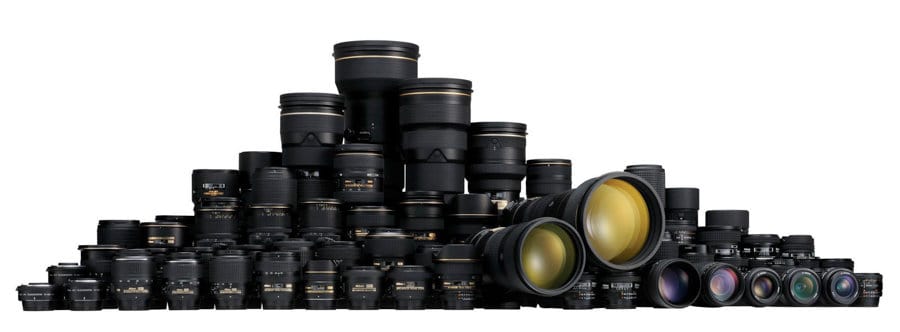
Below are some important specs on the D850:
- Nikon-designed back-side illuminated (BSI) full-frame image sensor with no optical low-pass filter
- 45.7 megapixels of extraordinary resolution, outstanding dynamic range and virtually no risk of moiré
- Up to 9 fps1 continuous shooting at full resolution with full AF performance
- 8K2 and 4K time-lapse movies with new levels of sharpness and detail
- Tilting touchscreen, Focus Shift shooting mode, outstanding battery performance and much more
- 4K Ultra HD video recording, slow motion up to 120 FPS at 1080p
It must be noted that to get maximum benefit out of the new large 45.7mp sensor, you'll need to use the latest, high resolution lenses to go with this body. Older lenses simply cannot resolve enough detail to really get the very most from this camera. Nikon's latest 70-200mm f2.8 VR III, for example, is a super sharp lens and is a great fit for this body and it should be at $2,700. Also, the large files will zap hard drive space much quicker than with a camera with a sensor not so packed with pixels! Just something to think about when deciding on the D850.
The D850 currently sells for $$3,296.95 on Amazon.com.
The NIKON D850 is available HERE!
3 ) Canon 5D M IV
The Canon 5D M IV is an outstanding Professional DSLR that is truly an all in one camera. It has a larger 30.4 megapixel sensor, up from the 22.3 megapixels it had in the previous M III version. The 5D Mark IV went on Sale in September on 2016 and has been a big hit for Canon and thousands of photographers around the globe.
One topic many photographers were curious about was what the sensor was going to be like. Canon makes arguably the finest line of lenses and camera bodies in the world. They aren't the huge company they are by chance! However, as sensor technology has improved greatly with companies like Sony hitting one homerun after the next when it comes to sensor tech, Canon has fallen behind in the dynamic range race and many 5D Mark III users were very interested in seeing what the new body would bring. ISO Invariant sensors are important today especially if the photographer shoots lots of landscape work or anything that has great dynamic range. Jim Harmer wrote an excellent article on this subject back before the 5D Mark IV was out on the market. Check that out HERE for more information on the topic. To make a long story short, YES, Canon did indeed improve the sensor performance and while not 100% ISO Invariant, it is a sensor extremely capable of getting an amazing amount of detail from the RAW files.
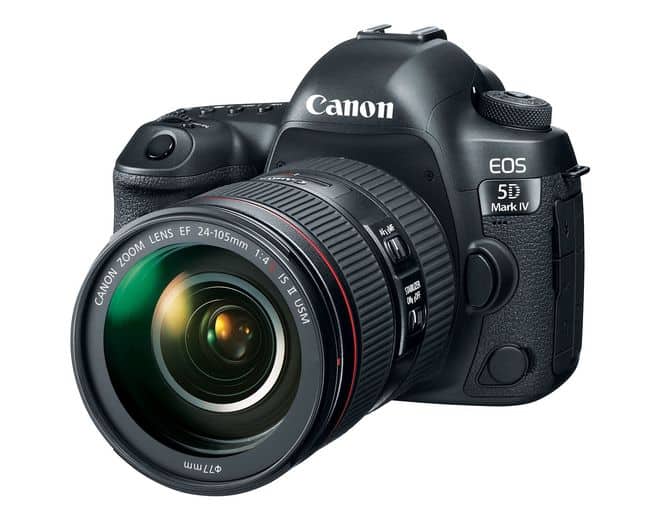
When you couple the newer sensor along with great weather sealing, super AF system and their new “DUAL PIXEL AF” technology, you have one of the very best cameras on the market today. Any current Canon owner with Canon lenses can purchace this body knowing they are getting a great camera that performs well at just about everything it does.
TILT SCREEN?
One feature that is missing that is quickly becoming more and more popular today is the very handy tilting screen. Once you shoot with one, it is darn near impossible to go back to not having one. Canon does, however, have a great wireless system via your phone built in. This allows full control of your camera remotely and you can also quicky download files to your phone and even star rate them on your hand held device. I've seen two demonstrations of this application and it is wonderfully integrated and quite useful. It would be nice, however, if Canon does indeed give its users a tilting screen on the next version of this super popular camera because fumbling with fewer things is always best.
The 5D Mark IV also includes 4K video with the ability to take stills from the video and these are files you could post to web with great clarity and even print as long as you're not going too large. Here is a sample file taken from the 4K grab – CLICK HERE!!
Below are a key list of features in this super versatile DSLR from Canon:
- New 30.4MP CMOS full-frame sensor with Dual Pixel AF
- DCI 4K 30/24p video using Motion JPEG + 4K Frame Grab
- 61-point AF system with 41 cross-type sensors (center point sensitive to -3 EV)
- Dual Pixel AF (sensitive to -4EV) for continuous Servo AF in stills (first for a full-frame Canon camera) and video
- ISO 100-32000 (expandable to 102400)
- 7 fps continuous shooting
- Dual Pixel Raw (image microadjustment, bokeh shift, ghosting reduction)
- 150,000-pixel RGB+IR metering sensor
- 1.62M-dot 3.2″ full-time touchscreen
- Wi-Fi w/ NFC + GPS
- Built-in bulb timer interval timers
- Improved weather-sealing
Canon cameras are known for having a menu system than is much easier to work with than either Nikon and certainly Sony. Their users love the user experience and that means a lot when a camera system is being decided upon. Anyone contemplating a camera such as the 5D Mark IV is most likely already invested in Canon lenses and that makes the choice a whole lot more simple. Canon is also very well regarded for having extremely well made, weather sealed and tough as nails bodies and lenses. In their lens lineup, you have a seemingly endless selection of lenses to choose from. Their L series lenses are of the highest quality and performance. Even when it comes to specialty lenses such as Tilt Shift lenses, they have SEVEN different lenses in the T/S variety since they just release a few more new ones. There is a reason Canon is the very best Camera Brand on the planet – outselling all others!
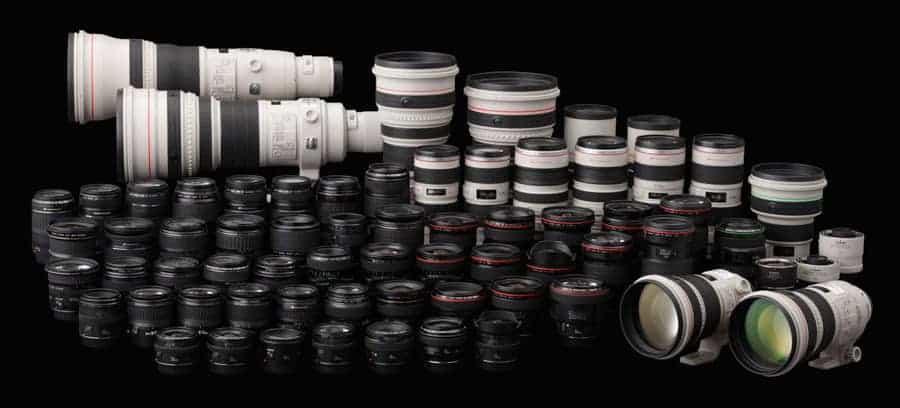
The Canon 5D Mark IV is a really great all around camera. And I mean great. It is a GREAT landscape body. A GREAT portrait and stuido camera. A very capable event and action camera and certainly very popular with professional wedding photographers around the world! If I were a Canon shooter, this would certainly be my very first choice among any of the cameras listed here.
This Camera Body currently can be ordered from Amazon.com for $3,199.00.
You can have the 5D Mark IV by clicking HERE!
4 ) Pentax K-1
The Pentax K-1 is truly a camera that anyone involved with the photography industry should be well aware of. It has a super rugged and weather sealed body and a feature set not seen on any other DSLR in the world. For starters, it is the only full frame DSRL that has sensor based image stabilization. We have seen this with cameras but not in the full frame DSLR world.
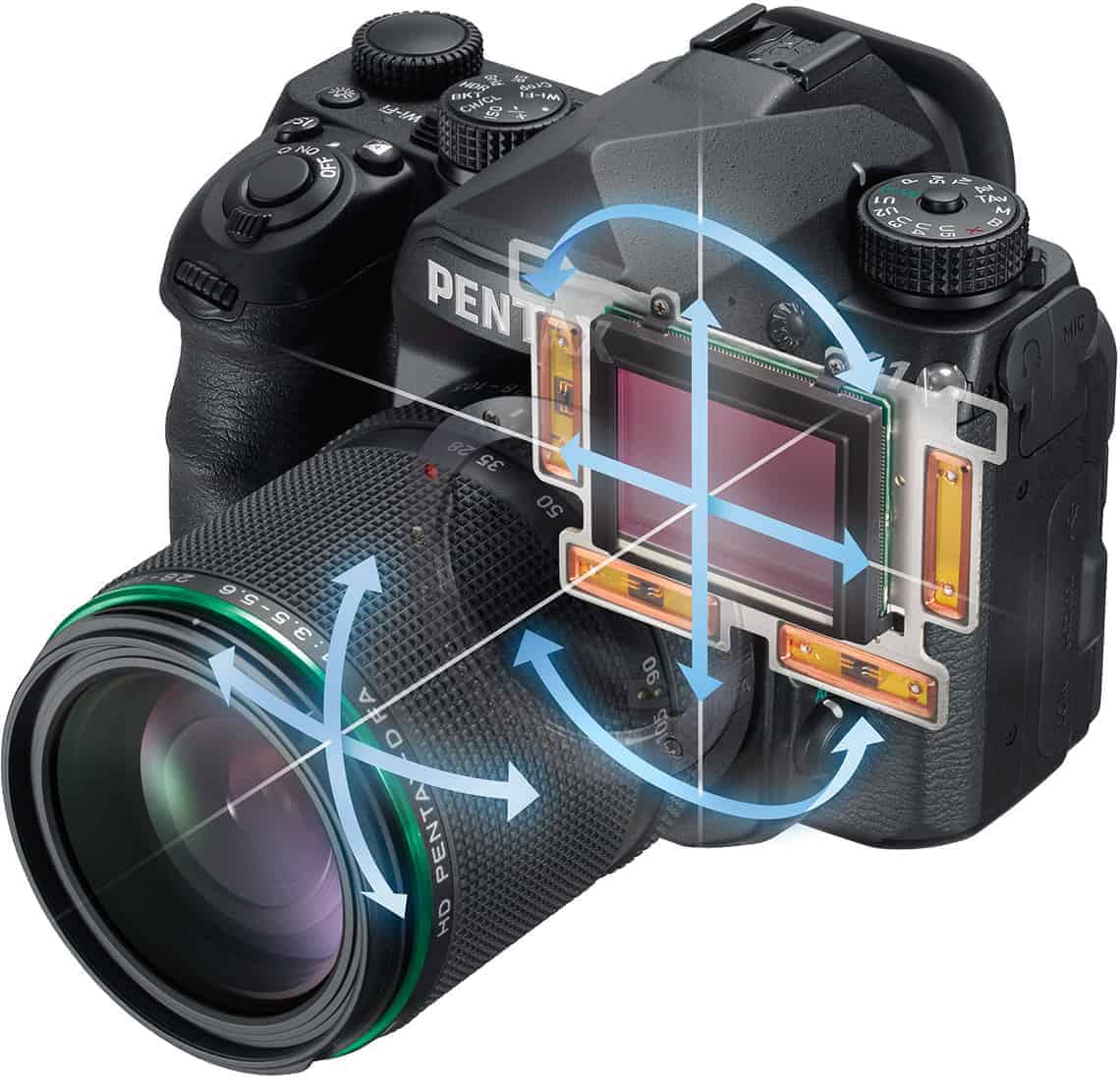
One common complaint that many point out about the K-1 is the lack of lenses to choose from. While they may not offer what a Nikon or Canon camera can in terms of lens choices, the idea that there are only a few lenses is just not true. Take a look HERE to read up on this topic.
Having a sensor that is moveable is more than just for image stabilization. They also have an anti-aliasing filter simulation that creates vibration in the sensor during the exposure. This will intentionally blur high frequency details across multiple pixels which helps avoid moiré.
They also have a Horizon Correction feature that rotates the sensor if you happen to have the camera slightly off level. Since there is a built in GPS (something else they should ALL have), their own Astrotracer system uses the movement of the sensor to negate the rotation of the earth while taking night time images of the stars and solar system. This is done via calculations using the built in GPS.
Another benefit from this sensor tech is called Pixel Shift Resolution. This increases color resolution by shooting four images and slightly moving the sensor in one pixel increments. This cancels the Bayer color filter array while also lowering image noise by averaging images.
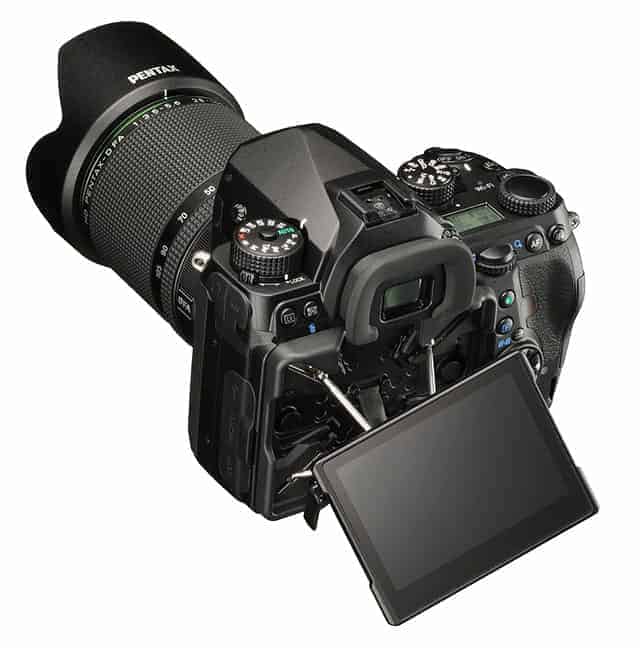
Tilt Screen Done Right!
Another very cool feature on this super rugged body is the very handy tilt screen. If you've ever used a tilt screen when shooting on a tripod, you know just how beneficial that they are when it comes to composing a shot and also staying dry and not so dirty! Not having to lay down on the ground OR having to stand on something just to see the camera at a specific angle is very helpful. When you use an L bracket or shoot vertical, the usefulness of the tilting screen goes away unless the screen can tilt out in the vertical orientation as well. With the K-1, you get exactly that.
The downside on this camera is the Auto Focus system. It fails to compare to the three previously mentioned cameras in this article. It has just 33 focus points and of that, 25 are cross type. Another annoying feature on this camera is the AF points do not illuminate until you lock focus which seems a bit odd.
Despite the fast action shortcomings, at around $1,800, it is an absolute steal when compared to other bodies with the same image quality and feature set. If you are a still shooter focusing mainly on landscape, portraits, products, etc – this may just be the perfect camera for you. Here is a list of the K-1's key features:
- 36.2MP full-frame CMOS sensor with no anti-aliasing filter
- 5-axis image stabilization rated to 5 stops by CIPA standard testing
- 100% pentaprism viewfinder with 0.7x magnification
- 33-point AF system (25 cross-type)
- Extensive weather-sealing
- 1/200 sec flash sync speed
- 14-bit Raw recording (DNG or PEF)
- AA filter simulation
- Multi-shot Pixel Shift Resolution mode
- Built-in GPS with electro-magnetic compass and Astrotracer function
- 4.4 fps continuous shooting (6.5 fps in APS-C crop mode)
- Wi-Fi
- 1080/30p video
A Facebook fellow photographer and friend from Norway is the one man that inspired me to jump into photography just by seeing his work on 500px. He is a school teacher from Norway that got a camera as a gift and began getting deeper and deeper into Photography and produces fantastic landscape images. He uses and LOVES the Pentax K-1 for his landscape works and swears by the K-1 for its amazing feature set and image quality. He said “The image quality is superb with fantastic dynamic range, resolution and color depth!” He can be found on FACEBOOK HERE!
As mentioned in this article, at the time of this writing, the Pentax K-1 can be had for about $1,800.00
You can order the Pentax K-1 right HERE!
Fuji X-T2
The FujiFilm X-T2 Mirrorless camera is one that has a much smaller form factor in body size and lens lineup than any of the others in this list thus far. This is the first camera listed here that contains an APS-C (Crop) sensor but don't let that fool you. The war of full frame vs crop has become much less of a battle today as many crop sensor cameras perform as well and in some cases better than their full frame counterparts. The Fujifilm cameras have a rugged, classic look that makes them look like the cameras of decades past but the technology contained within is anything but nostalgic.
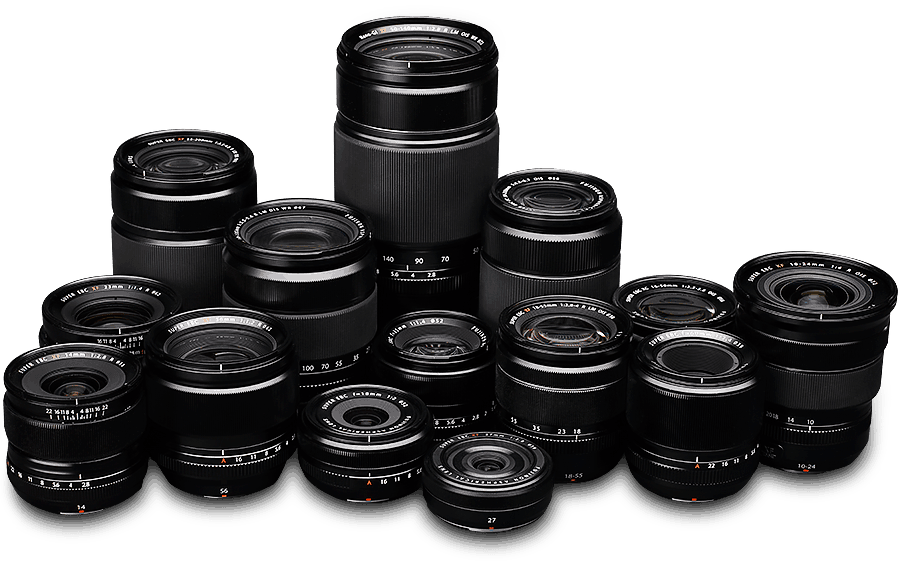
The newer sensor now comes in a larger 24.3mp resolution. The EVF (electronic view finder) is a 2.36M dot OLED display that has been improved upon to help with moire and false colors. This is due to the faster refresh rate of 60fps.
The Native ISO Range is 200-12,800 while the extended range is 100-51,200. The mechanical shutter can capture image information from 30 sec to 1/8000th while the electronic shutter can shoot up to 1/32,000th.
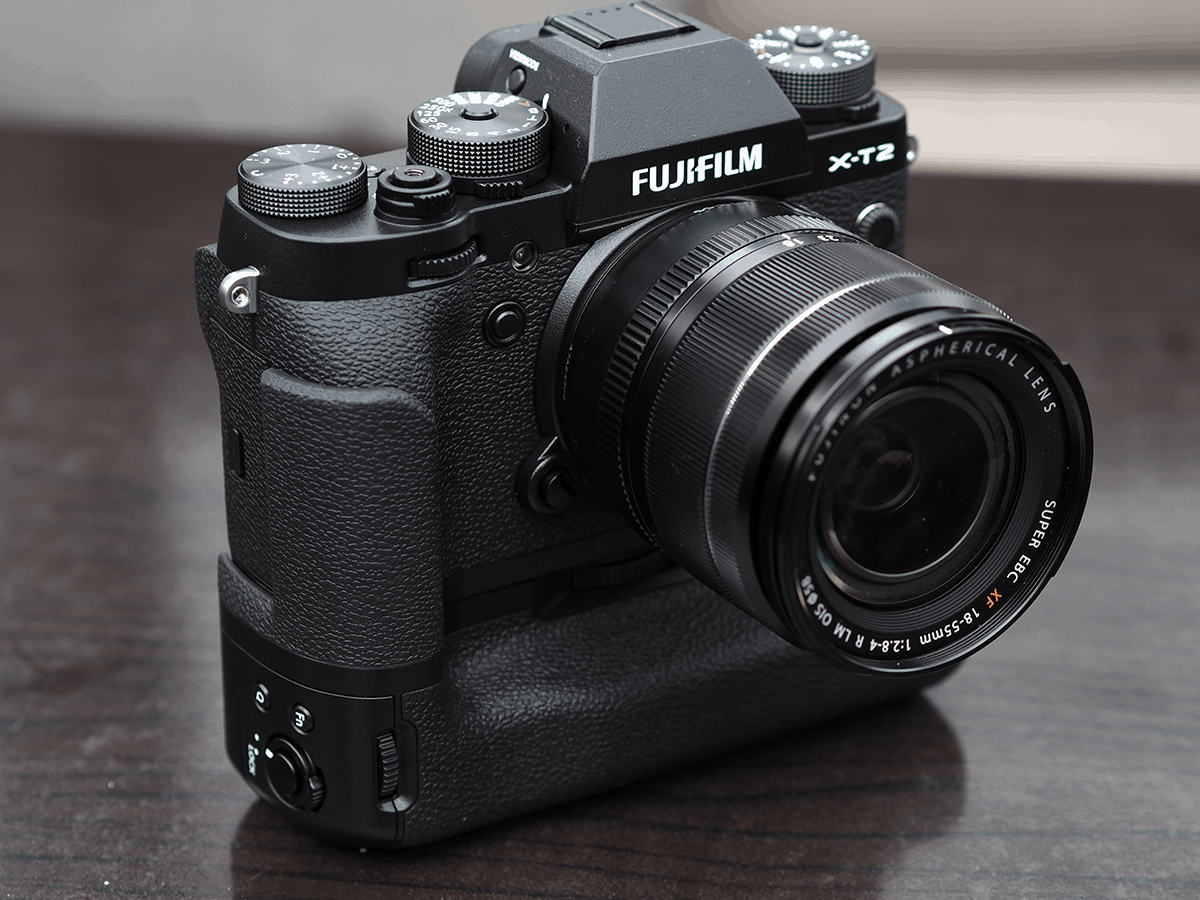
The buffer/fps information is as follows depending on what format you are shooting in:
- Up to 14 fps for up to 42 Frames in JPEG Format
- Up to 14 fps for up to 28 Frames in Raw Format
- Up to 8 fps for up to 83 Frames in JPEG Format
- Up to 8 fps for up to 33 Frames in Raw Format
- Up to 5 fps for Unlimited Frames
- Up to 5 fps for up to 39 Frames in Raw Format
The Auto Focus system is improved and this is thanks to the 325 AF points (169 offer Phase Detection) and the addition of an AF point selection joystick which many had been hoping for. The X-T2 can shoot up to 8fps when shooting continuous with AF and increased to 11fps when used with the booster battery grip.
VIDEO
A great addition to this body is the introduction of 4K Video recording. The X-T2 offers internal UHD 4k along with an 8 bit 4:2:2 HDMI output. The internal recording offers a nimble 100Mbps bitrate to allow fine details to be recorded. F-Log Gamma setting is available for capturing a flat picture which will aide in serious grading applications.
The tilting screen not only tilts up or down but also to the right which is a very welcome feature in any flip screen on ANY camera.
The X-T2 has a more powerful processor coupled up with revised algorithms and faster read-out to increase the camera's speed. This is of course a welcomed improvement to all the loyal Fuji fans waiting for an upgrade.
Here are some of the vitals for the Fuji X-T2:
- 24.3MP APS-C X-Trans CMOS III Sensor
- X-Processor Pro Engine
- 0.77x 2.36m-Dot OLED Viewfinder
- 3.0″ 1.04m-Dot 3-Way Tilting LCD Screen
- Internal UHD 4K Video & F-Log Gamma
- Built-In Wi-Fi Connectivity
- 325-Point Intelligent Hybrid AF System
- Up to 8 fps Shooting and ISO 51200
- Weather-Sealed Body; Two UHS-II SD Slots
- Film Simulation and Grain Effect Modes
The Fuji X-T2 currently sells for about $1,500.
You can find it on Amazon.com right HERE!
Panasonic DC-GH5
Rounding out our list here is a Micro 4/3 camera that has an amazing set of features and may be best suited for videographers instead of photography because it sports some amazing, pro level video features. The Micro 4/3 system is truly a mirrorless digital system much as the Fujifilm systems are. The main benefits from these smaller mirrorless cameras are the size and weight of them versus the much larger Full Frame DSLR bodies and even crop sensor DSLRs. The DSLR's are basically film cameras with a digital imaging sensor placed where the film once was. Now that isn't exactly how it works but they are these enormous and heavy systems that after a full day of shooting can give you tennis elbow – or should it be called Photographers Elbow??
Whatever the case may be, smaller and lighter cameras have their obvious advantages and the pluses of the Micro 4/3 system don't end there. Since they all share the same sensor and mounting, all Micro 4/3 lenses can be used on Micro 4/3 camera bodies even when they are from different brands. The crop factor of a Micro 4/3 is 2.0 meaning the focal length equivalent would be double that of a full frame camera. So when shooting 15mm on a Micro 4/3, this would give you the field of view of a 30mm lens on a standard full frame camera.
Now that we have that out of the way, let's take a look at this feature packed, super system that is the Panasonic DC=GH5!
From the start, I will point out that this camera has some very high end video features and this should be taken into consideration. While it is a very capable camera for Photography, the video aspects of this camera is where it really shines as it should.
The in-body image stabilization and 4K video without cropping make this an attractive upgrade to anyone who was using the popular and powerful GH4.

The 20.3 MP Sensor has an ISO range of 200-25600 with an extended mode of 100-25600. The shutter information is as follows:
- Type: Electronic & Mechanical
- Speed: 60 – 1/8000 Second
- Type: Electronic & Mechanical
- Speed: 30 – 1 Minute in Bulb Mode
- 1/24 – 1/16000 Second in Movie Mode
- Type: Electronic
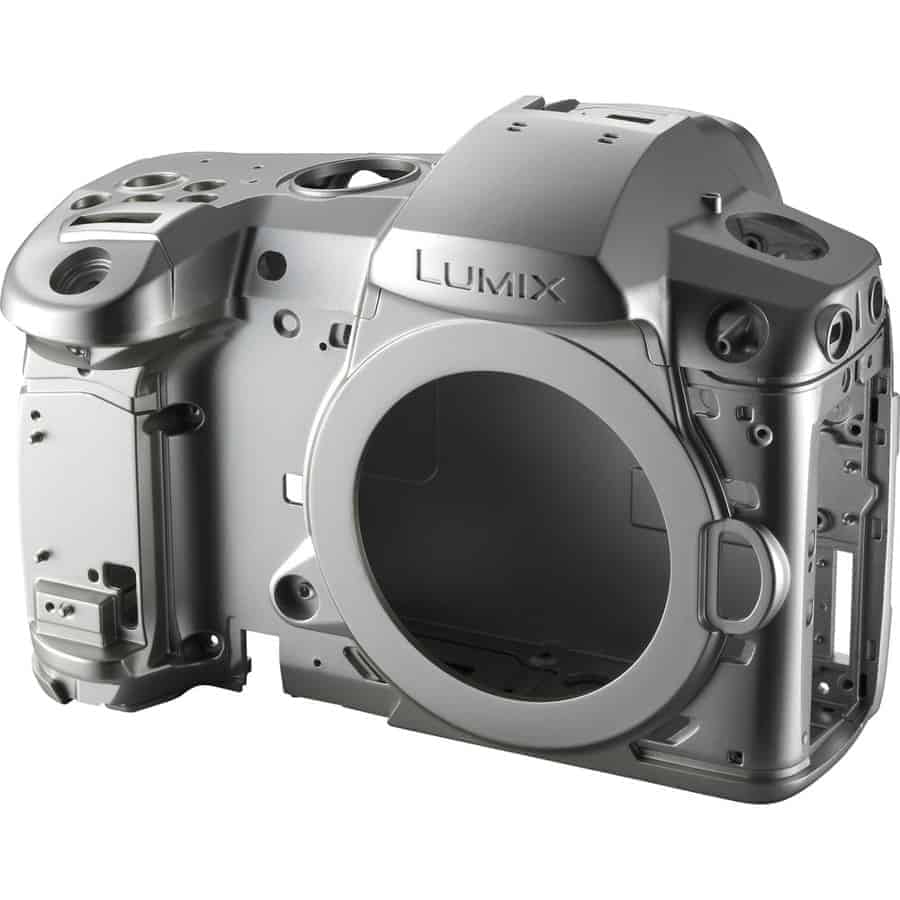
Panasonic built this body to last! Pro Quality build all the way! - Speed: 1 – 1/16000 Second
The video aspects of this camera are truly impressive and many indie filmmakers turn to the GH5 for their professional video needs. As mentioned earlier, it records 4K with no crop and Internal 4:2:2 10 Bit 4k Recording at 24/30fps. This camera supports two SD cards (both UHS-II)
Below is a listing of several key aspects of the Panasonic DC-GH5:
- 20.3MP Digital Live MOS Sensor
- Venus Engine Image Processor
- 4K Video with No Crop
- Internal 4:2:2 10-Bit 4K Video at 24/30p
- 5-Axis Sensor Stabilization; Dual I.S. 2
- 0.76x 3.68m-Dot OLED Viewfinder
- 3.2″ 1.62m-Dot Free-Angle Touchscreen
- Advanced DFD AF System; 6K & 4K PHOTO
- ISO 25600 and 12 fps Continuous Shooting
- Dual UHS-II SD Slots; Wi-Fi & Bluetooth
The tech included in this body is very impressive as is the built to last quality on the outside. It is constructed from magnesium alloy with die-cast front and rear frames. All joints, dials and buttons are fully sealed and protected against splashes and they are dust proof as well. If cold climates are in your plans, the body is also freezer proof down to 14 degrees F/ -10 degrees C.
For anyone looking to get into a system with a wide assortment of lenses, robust and professional video features as well as extremly good stills, the Panasonic DC-GH5 is as good as anything else on the market today and at a price point far below other offerings.
The Panasonic DC-GH5 retails for about $1995.99
This Camera can be purchased HERE!
OTHER CAMERAS NOT LISTED
Obviously there are other cameras that fall into this price range that could have replaced any of the cameras here. For example, the Sony A9 is under $5,000 and certainly could be considered one of the best around today for under $5,000 but to be fair to other brands, I tried to not choose more than one from each manufacturer which I have done. The Canon 5DSr is obviously another great camera that closes in on the $4,000 mark. The Sony A7RII is still an amazing camera with that sensor that still blows my mind. So if you don't see a camera that you'd like to have seen mentioned, please leave a comment below!
CONCLUSION
In concluding this article, I had mentioned earlier what camera body I would choose if I had to make a choice. For me, personally, it would be quite simple. I currently shoot Nikon and have a handful of very high quality (AND HEAVY) lenses that I love to use and they give me great pleasure when doing so. I currently shoot a Nikon D750 so the obvious choice for me personally would be the Nikon D850. The D850 is a beast of a camera with an amazing feature set. The 45.7 MP sensor and the quality of that sensor is simply amazing. That along with the speed in which it works is something that just 5 years ago would seem impossible. I am fully used to and comfortable with the Nikon menu system and it would only make sense for me to choose the Nikon.
Now on the other hand, if you were to hand someone a check for $10,000 and they had to choose a system listed here and buy the camera body and lenses with the money, what would you choose?? I would probably go with the Sony A7RIII. From what I have personally seen and have heard from other photographers lucky enough to have their hands on one of these, it is simply an amazing body. That coupled with the glass Sony is producing with their G Master series is totally amazing. Mirrorless is the future and Sony is leading the way with their fantastic sensors and technology that is pushing the entire industry forward.
Please leave comments or any questions below and thanks for reading!

Glad to see the Pentax K1 in there. Pentax (Ricoh is the parent company) are often forgotten, thanks to their lack of advertising, and lack of stocks in shops. I’ve never had an issue with the autofocus, but I heard it can be in sports and reportage photography – Pentax chose not to pursue that route and you are better with a Nikon or Canon for those. But for landscape, townscape, portrait and studio work the K1 is about as good as you can get, and its a bargain compared with Canon/Nikon equivalents. There are only seven lenses specifically for the K1 as Pentax only introduced FF 18 months ago, but they are good (aimed at a discerning market) and more are on the way. I have the 24-70mm F2.8 – it’s all heavy though. Many Pentax primes for their APS-C cameras can also be used, (check compatibility in that lens link) and also any Pentax legacy film lens from 1975 (ie K-mount); the image stabilisation, being in-camera, works with them all.
$5000 is a little much at this point. I have a Sony A 58 and love it. “A” mount which now seems to be getting scarce, more “E”
Thanks for the choices though
I love my Pentax, you can’t beat it for the money.
I just want to buy Canon 5D M IV. I love it. Thanks for sharing it.
Nice roundup, the Nikon D850 and Fuji XT-2 are on my wishlist this year but not sure I can fully justify the cost yet!
The Pentax K-1 has a feature set with a build quality that if it were a Nikon or Canon – it would cost about $4000!!!